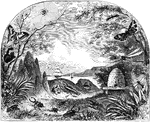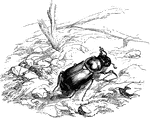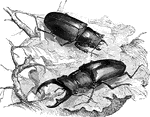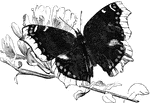
White Ants
"These animals, often called White Ants, live in vast communities, principally in the hotter…
Leodice antennata
"The Leodice antennata has the organs of locomotion attached to each segment; they are usually…
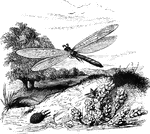
Antlion and Larva
"In some species the larvae, which are small, sluggish, oval-shaped creatures, and furnished with a…
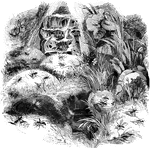
Ants and Their Structures
"This tribe, which includes the various kinds of Ants, is composed entirely of insects which live in…
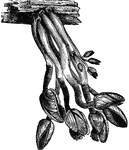
Barnacles
"The Common Barnacle, Lepas anatifera, perhaps the best-known example of the order, generally…
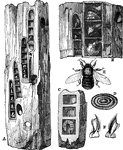
Carpenter Bee
"A, B, C, tunnelings of the carpenter bee; E, the carpenter bee; D, a partition; F, teeth, magnified"…
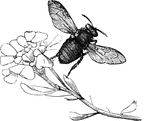
Drone Bee
"The working bee, for collecting wax, enters a flower, the stamens of which are loaded with pollen.…
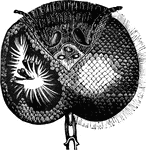
Eyes of a Bee
"The eyes, which are among the most wonderful objects in nature, are almost always of the kind called…

Mouth and Tongue of a Bee
"The structure of the mouth in insects exhibits very remarkable modifications, and these are of the…
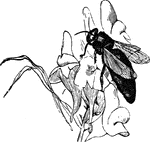
Queen Bee
"The queen bee is larger and longer than the other bees; she moves in a slow and majestic manner, and…

Working Bees
""The working bee, for collecting wax, enters a flower, the stamens of which are loaded with pollen.…

Bees Secreting Wax
"The secretion of wax, it would appear, goes on best when the bees are in a state of repose, and the…
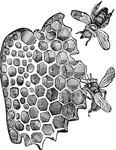
Cells of Honey Bees
"The hexagonal cells for the honey are build upon precisely that mathematical angle which affords the…

Blackspotted Pliers Support Beetle
"The Leptura Mordax, or Rhagium Mordax of Europe, three-fourths of an inch long,…
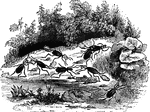
Bombadier Beetle
"The bombadier beetle has a large oval abdomen, which secretes a caustic fluid. They live in societies,…
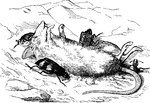
Burying Beetles
"The Burying Beetles are prompted by their insect to bury any small animals or pieces of carrion as…
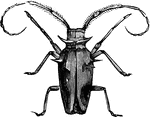
Capricorn Beetle
"The insects of this tribe, called Capricorn Beetles and distributed throughout most parts…
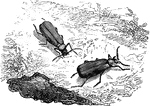
Cardinal Beetle
"One of the most beautiful of the European species of trachelia is the Pyrochroa rubens, which…

Churchyard Beetle
"These insects are generally found in dark and dirty places about houses, in cellars, and similar situations."…

Click Beetle
"The Elater striatus of Caenne, is an inch long, of a black color, and striped upon the back."…

Deathwatch Beetles
"Other species, which also bore into timber in their larva state, are well known by the name of Death-watch…

Four-Spotted Beetle
"Smallish insects, generally of a black color, with the elytra rather shorter than the body, which is…
!["One of the largest European beetles, the Brown Hydrophile, <em>Hydrous piceus</em>, which is common in ponds in some localities, belongs to [the philhydrida]." — Goodrich, 1859](https://etc.usf.edu/clipart/14600/14660/brownhydro_14660_mth.gif)
Giant Silver Beetle
"One of the largest European beetles, the Brown Hydrophile, Hydrous piceus, which is common…

Great Diving Beetle Adult and Larvae
"The Dyticus marginalis, a European species very common in ponds, attains a length of more…

Great Diving Beetle Female
"The Dyticus marginalis, a European species very common in ponds, attains a length of more…
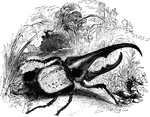
Hercules Beetle
"The hercules beetle is a native of Brazil, sometimes attaining a length of five inches." — Goodrich,…

Lard Beetles
"Received its specific name on account of the fondness exhibited by its curious larva for bacon." —…

Leaf Beetle
"The Popular-tree Golden bug, chrysomela populi, of a blueish-green, has a strong odor, and…

Sacred Beetle
"Many of the dung beetles, among which the Sacred Beetle of the Egyptians, Scarabus Aegyptiorum,…

Scarab Beetle
"Is nearly twice as long as the hercules beetle, its color being of a brilliant brown." — Goodrich,…
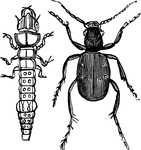
Tiger Beetle and Larvae
"The common European species, Cincindela campestris, may be found flying and running around…
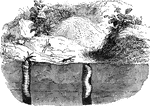
Tiger Beetle Larve
"The common European species, Cincindela campestris, may be found flying and running around…

Typograhic Beetle
"The typographic beetle recieves it's name... from the circumstance that the burrows formed by it in…

Giant Buprestis
"The Giant Buprestis, B. gigantea of guiana, is two inches long, and its body is of a green…
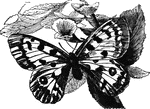
Apollo Butterfly
"The Apollo butterfly, P. Apollo, is found in the damp meadows of the high Alps; the wings…

Half-Mourning Butterfly
"The Galatea Butterfly, P. Galatea, A Euoprean species, called The Half-Mourning Butterfly,…
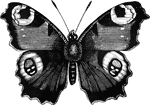
Peacock Butterfly
"The Peacock-butterfly, V. Io, has the edges of the wings denticulated; above they are of a…
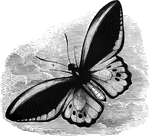
Priam Butterfly
"The Priam butterfly, Papilio priamus, is a native of the Eastern Archipelago; its wings are…
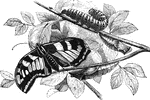
Stages of Development of a Butterfly
"Butterfly, Grub or Caterpillar, and Pupa or Chrysalis" — Goodrich, 1859
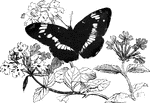
Sybil Butterfly
"The Sybil Butterfly, P. Sybilla, sometimes called the Mourning Butterfly, is a common…
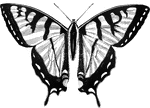
Troilus Butterfly
"The Troilus Butterfly, Papilio Troilus, is a superb insect, the wings denticulated, black,…

Calymene
"The trilobite's general form is shown in the annexed figure of the Calymene Blumenbachii;…
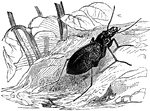
Blue Carabus
"The Blue Carabus, C. cyaneus, is an inch and a quarter long, the body oval, flat, and above…
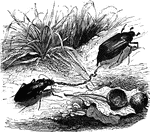
Golden Carabus and Cock-Chafer
"In illustration of the savageness of this race, the author of the "Jardin des Plantes" tells us of…
!["The Inquisitor Carabus, <em>C. inquisitor</em>, has the same form and manner as the [Sycophant Carabus]: the body is an inch long, and of a blackish-green color." — Goodrich, 1859](https://etc.usf.edu/clipart/14600/14649/inquiscarabs_14649_mth.gif)
Inquisitor Carabus
"The Inquisitor Carabus, C. inquisitor, has the same form and manner as the [Sycophant Carabus]:…

Cassida gibbosa
"The Cassida gibbosa of Brazil, three quarters of an inch long, is one of the larger species…

Processionary Caterpillars
"If the guide stops a moment all the followers halt; if he continues the route, they all hasten after…
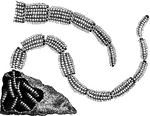
Processionary Caterpillars
"If the guide stops a moment all the followers halt; if he continues the route, they all hasten after…
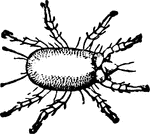
Cheese-mite
"The Cheese-mite, Acarus domesticus, and others are parasitic upon or beneath the skin of man…

Cicada
"In America the cicadas have the general name of Harvest-flies; they are also often improperly…
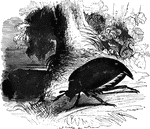
Cockchafer
"In the common European Cock-Chafer, Melolontha vulgaris, they are of considerable length,…
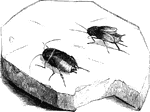
Common Cockroach
"Blattina includes the Cockroaches, the most noted species of which, the Black beetle or Common…

Cocktails
"The larvae are very similar to the perfect insects, both in appearance and habits. Many of them feed…

